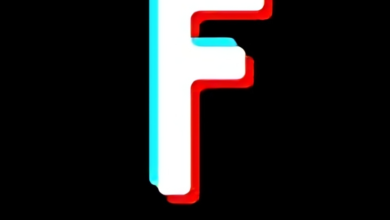Omegascans vs. Traditional Texturing: Which is Right for Your Project

Texturing in 3D modeling can make or break your project. Whether you’re creating stunning visuals for a video game, an architectural render, or a film scene, the right texture can add depth and realism to your designs. With advancements in technology, artists now have more options than ever when it comes to texturing methods. Two of the most popular are Omegascans and traditional texturing techniques.
But which one is right for you? Omegascans offers a library of high-quality assets that streamline workflows, while traditional texturing allows for artistic freedom and customization. The choice between them hinges on various factors like project requirements, time constraints, and personal preference.
Dive deeper into this comparison as we explore what each method brings to the table—and help you determine which route best suits your next creative endeavor.
Understanding Texturing in 3D Modeling
Texturing in 3D modeling is the art of applying surface details to a 3D object. It transforms simple shapes into lifelike representations, enhancing realism and aesthetic appeal.
Textures add color, patterns, and intricate features that define an object’s appearance. They can mimic materials like wood, metal, or stone, making designs more relatable.
Various techniques exist for texturing. Artists might choose hand-painted textures for uniqueness or photographic references for realism. Each approach contributes distinct qualities to the final render.
Understanding UV mapping is crucial as well; it involves unwrapping a 3D model’s surface onto a flat plane where textures are applied. This process ensures that every detail aligns perfectly when rendered in three dimensions.
With the right texturing methods, even basic models can resonate with viewers emotionally and visually—making them feel tangible within their digital environments.
Introducing Omegascans and Traditional Texturing
Omegascans is revolutionizing the world of 3D texturing. This library offers an extensive collection of high-quality scanned materials and textures. Artists can simply drag and drop these assets into their projects, saving time while achieving photorealistic results.
On the other hand, traditional texturing relies on manual techniques. Artists paint textures using software like Substance Painter or Photoshop. This method allows for greater creativity and customization but often comes with a steep learning curve.
Both approaches have unique benefits that cater to different project needs. Omegascans provides speed and efficiency, making it ideal for quick turnarounds. Traditional texturing fosters artistic expression but may require more effort upfront to master its intricacies.
Understanding these differences helps artists decide which method aligns best with their vision and workflow preferences.
Pros and Cons of Omegascans
Omegascans offers a treasure trove of high-quality assets. Artists appreciate the realism these scans bring to their projects. The textures are photorealistic, capturing intricate details that can elevate any 3D model.
Speed is another significant advantage. With ready-to-use materials, artists save valuable time in production. This efficiency allows for quicker iteration and faster project completions.
However, it’s not all roses. Omegascans may require a subscription fee, which can be a hurdle for independent creators or small studios on tight budgets.
Additionally, relying too heavily on pre-made assets can lead to uniformity across different projects. Unique artistic vision might get diluted when everyone uses similar resources.
Compatibility issues could arise with some software tools or game engines if proper adjustments aren’t made during the import process. These factors warrant careful consideration before diving into Omegascans for your next big endeavor.
Pros and Cons of Traditional Texturing
Traditional texturing offers a hands-on approach that many artists appreciate. It allows for complete control over the design and details of textures. This method can foster creativity, as you manipulate every aspect from scratch.
However, this process is time-consuming. Creating custom textures often requires extensive skill in various software programs. For beginners, the learning curve can be steep and frustrating.
Another downside is consistency. Maintaining uniformity across multiple assets might become challenging without proper guidelines or templates in place.
On the plus side, traditional texturing provides uniqueness to each project. Artists can implement their specific styles or needs tailored to individual game elements or visual storytelling.
While traditional methods offer flexibility and craftsmanship, they may not always align with tight deadlines or budget constraints demanding efficiency.
Factors to Consider When Choosing Between Omegascans and Traditional Texturing
When choosing between Omegascans and traditional texturing, consider the project’s timeline. Omegascans can speed up the process significantly. With a vast library of ready-to-use textures, you save valuable time.
Budget is another crucial factor. While Omegascans offers high-quality assets, licensing fees may add up quickly. Evaluate whether your budget aligns with these costs or if traditional methods are more feasible.
Think about customization as well. Traditional texturing lets artists create unique styles tailored to their vision. On the other hand, using Omegascans might limit some creative freedom due to pre-existing textures.
Assess your team’s skill level. If they are experienced in 3D modeling techniques, traditional texturing might be a strong choice. However, for teams looking to ramp up productivity quickly without extensive training, Omegascans could provide an easier path forward.
Case Studies: Examples of Projects Utilizing Omegascans and Traditional Texturing
One standout project that utilized Omegascans is the game “Ghost of Tsushima.” The developers integrated high-quality textures from Omegascans to create stunning landscapes. This choice enhanced realism and allowed for rapid development without compromising quality.
On the other hand, traditional texturing shines in projects like Pixar’s animated films. Artists painstakingly craft textures by hand, giving a unique touch that aligns perfectly with their artistic vision. The character designs benefit from this meticulous approach, resulting in visually captivating films.
Another example is the indie game “Journey,” which leveraged traditional techniques to evoke emotional responses through its stylized visuals. Every texture tells a story, immersing players deeply in its world.
Both approaches have distinct advantages depending on project goals and timelines. Analyzing these examples provides insight into how each method can elevate a creative endeavor effectively.
FAQs
What is Omegascans?
Omegascans is a powerful library of high-quality textures and materials designed for 3D modeling. It allows artists to access a vast array of assets that can elevate the realism of their projects significantly.
Can I use Omegascans in any software?
Yes, Omegascans are compatible with several popular 3D software platforms, including Unreal Engine, Unity, Blender, and more. This versatility makes it accessible for diverse workflows.
Are traditional texturing methods outdated?
Not at all! Traditional texturing still holds value. Many artists prefer creating unique textures tailored specifically to their projects. Experience often leads to stunning results through these techniques.
How does using Omegascans affect my workflow?
Integrating Omegascans into your pipeline can streamline the process considerably. It saves time on asset creation while ensuring high-quality outputs.
Is there a subscription fee for accessing Omegascans?
Yes, access typically requires a subscription plan; however, many find the investment worthwhile given the quality and variety available.
Conclusion
When it comes to choosing between Omegascans and traditional texturing methods, the decision ultimately hinges on your specific project needs. If you seek efficiency and high-quality results with minimal time investment, Omegascans may serve you well. Their extensive library offers ready-to-use assets that can significantly speed up your workflow.
Conversely, if you’re looking for complete creative control and want to craft unique textures from scratch, traditional texturing might be the way to go. It allows for a personal touch that can set your project apart in a crowded field.
Consider factors like budget, timeline, and artistic direction when making your choice. Each method has its strengths; understanding these will guide you toward the right approach for achieving visual storytelling success in 3D modeling.



